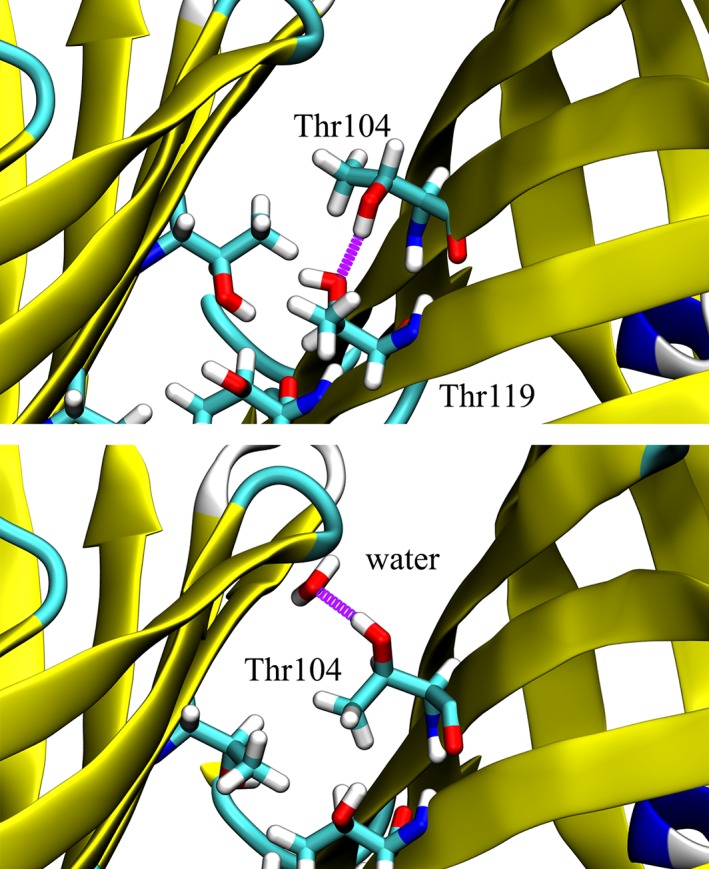Figure 2.

MD simulations of Azami Green reveal that Thr residues near the aqueous interface can either H‐bond to neighboring Thr (top) or to nearby water molecules (bottom). Many of the Thr hydroxyls that initially face inward (Χ 1 ≈ 60) quickly rotate outwards toward water (Χ1 ≈ 180, 300), though the rate of this transition depends strongly on the local hydration profiles and positions of stabilized water molecules. H‐bonds are shown in purple, carbon in cyan, oxygen in red, and hydrogen in white. Yellow, cyan, and white backbones indicate β‐sheet content, turns, and disordered regions, respectively.
